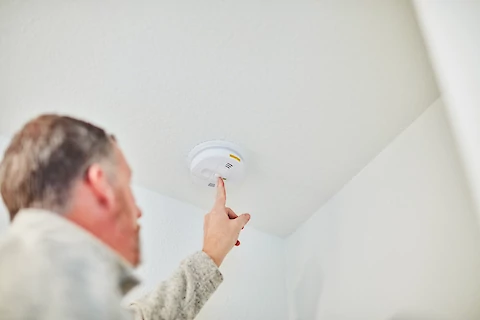
Prioritizing Safety: Ensure Your Smoke and Carbon Monoxide Detectors Are Working
Importance of Detector Functionality
The safety of your home and its occupants hinges on the proper functioning of smoke and carbon monoxide detectors. These devices serve as early warning systems for potential hazards, providing crucial time for evacuation in the event of a fire or gas leak. Understanding the importance of detector functionality is paramount for a secure living environment.
Regular Testing and Maintenance
Regular testing and maintenance are fundamental to the reliability of smoke and carbon monoxide detectors. Establish a routine to test each detector monthly. Most detectors have a test button that, when pressed, activates the alarm to ensure it’s working correctly. Additionally, follow the manufacturer’s guidelines for periodic maintenance and battery replacement.
Checking Battery Life
Smoke and carbon monoxide detectors are typically powered by batteries. A common cause of detector failure is dead or low batteries. Ensure your detectors have fresh batteries by checking and replacing them at least once a year. Some detectors come with long-life batteries, but it’s still advisable to test them and replace as needed.
Upgrading to Long-Life Batteries
Consider upgrading to detectors with long-life batteries for added convenience. These batteries can last for up to ten years, eliminating the need for frequent replacements. While these detectors may have a higher upfront cost, the long-term convenience and peace of mind they offer make them a worthwhile investment in home safety.
Interconnected Detector Systems
Interconnected detector systems provide enhanced safety by linking multiple detectors throughout the home. If one detector senses smoke or carbon monoxide, all interconnected detectors sound an alarm. This ensures that occupants are alerted regardless of their location in the house. Consider installing interconnected systems for comprehensive coverage.
Placement for Maximum Coverage
Proper detector placement is crucial for maximum coverage. Install smoke detectors in every bedroom, outside each sleeping area, and on every level of the home, including the basement. Place carbon monoxide detectors near sleeping areas and on each level of the home, following manufacturer recommendations for specific placement guidelines.
Monitoring Detector Expiration Dates
Like any electronic device, smoke and carbon monoxide detectors have a lifespan. Check the expiration date on each detector and replace them accordingly. Over time, sensors may become less sensitive, reducing the effectiveness of the detectors. Staying vigilant about expiration dates ensures that your detectors remain reliable.
Testing Detector Response to Smoke
In addition to routine testing, simulate real-world conditions to ensure detector response to smoke. Use a smoke detector test aerosol, available at hardware stores, to create a controlled smoke environment. This test allows you to verify that each detector activates the alarm when exposed to smoke, confirming their effectiveness in detecting potential hazards.
Understanding Carbon Monoxide Risks
Carbon monoxide is a silent and potentially deadly gas, making the functionality of carbon monoxide detectors critical. Know the sources of carbon monoxide in your home, such as gas appliances, furnaces, and fireplaces. Regularly test carbon monoxide detectors to ensure they can quickly detect and alert you to any unsafe levels of this odorless gas.
Seeking Professional Inspection
While regular homeowner testing is essential, seeking professional inspection is equally important. Hire a qualified technician to inspect and maintain your smoke and carbon monoxide detectors annually. Professionals can identify issues that may go unnoticed during routine testing, providing an additional layer of assurance for your home’s safety.
Prioritize Home Safety
Prioritizing the functionality of smoke and carbon monoxide detectors is a crucial aspect of maintaining a safe home. Regular testing, proper maintenance, and awareness of potential hazards are key components of a comprehensive safety strategy. Visit thietbidinhvithongminh.com for more information on ensuring your detectors are in optimal working condition.
Ensuring your smoke and carbon monoxide detectors are working is a proactive step toward creating a secure living environment. Regular testing, battery maintenance, and professional inspections contribute to the effectiveness of these life-saving devices, providing peace of mind for you and your loved ones.
